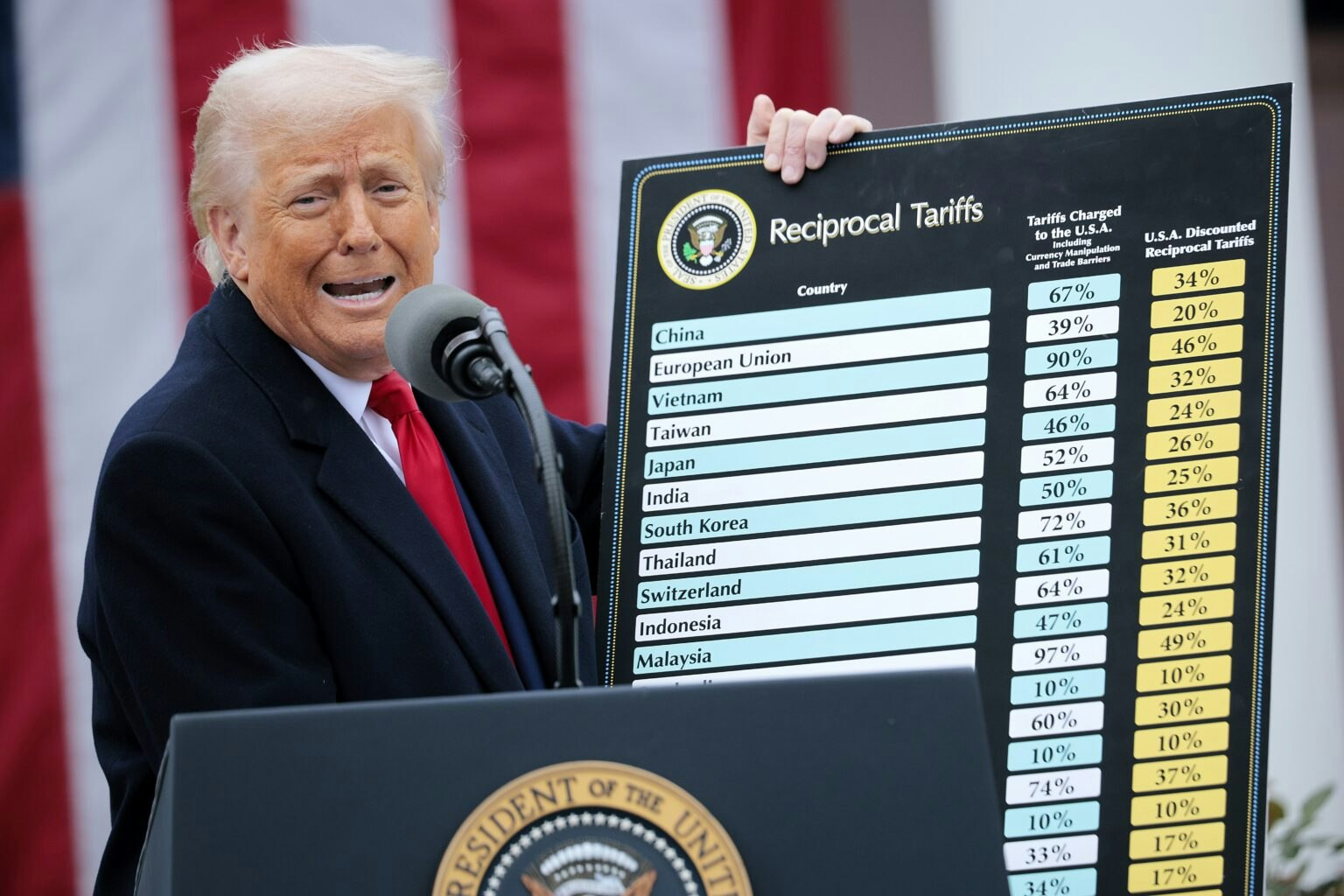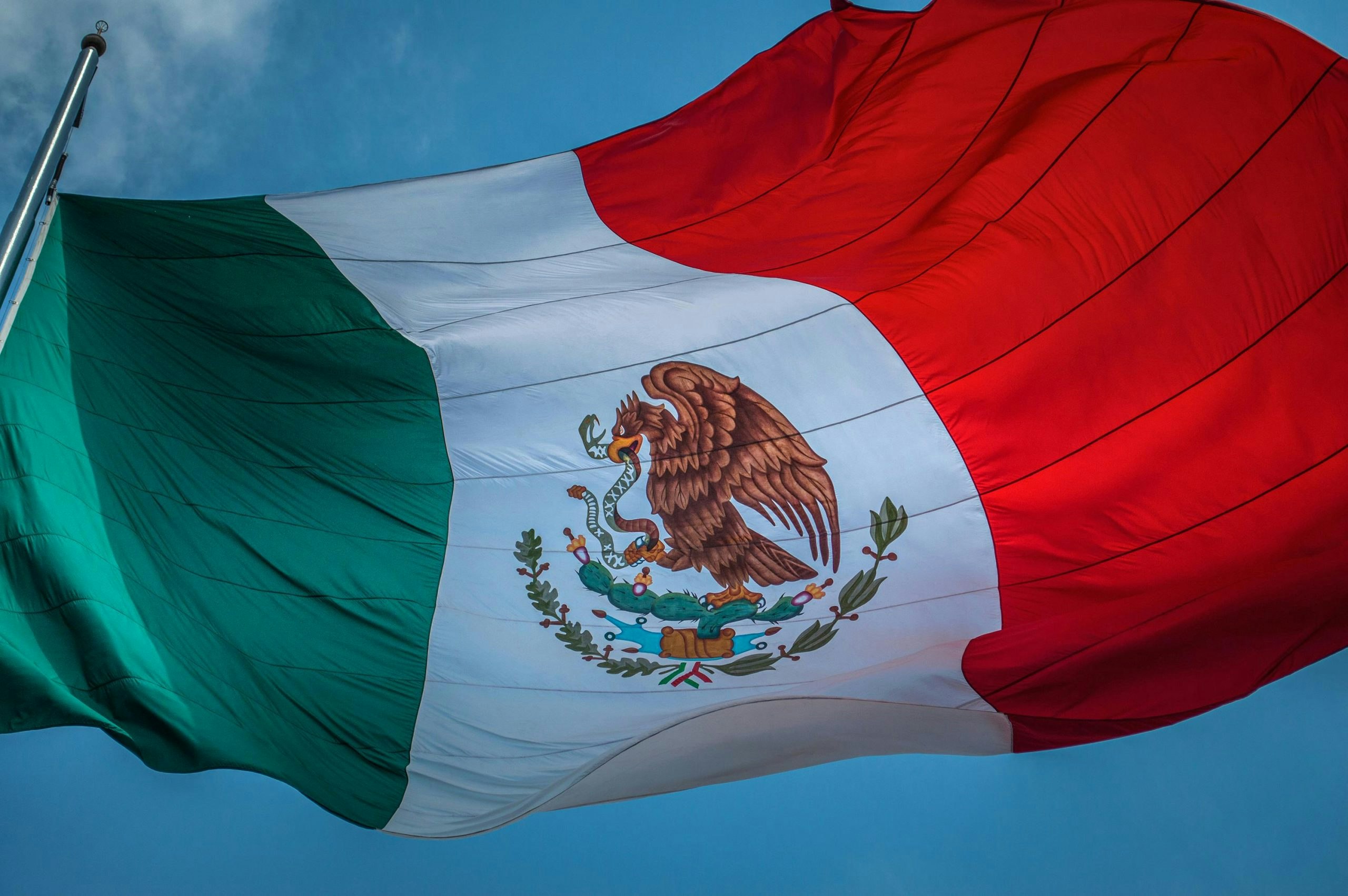
On April 2, 2025, President Donald Trump declared a "Liberation Day" for American industry by announcing sweeping import tariffs, significantly reshaping global trade dynamics. The new policy implements a baseline 10% tariff on all imports, with higher targeted rates for specific countries, dramatically impacting businesses that rely on imported goods.
-
China: Imports from China face a 34% U.S. tariff, on top of prior duties. This effectively raises total levies on Chinese goods to at least 54%, and in some cases even higher.
-
Vietnam: Products from Vietnam will be hit with a 46% tariff – one of the highest rates on the list – reflecting Vietnam's large trade surplus with the U.S. and its growing role in global manufacturing.
-
Other Countries: The European Union faces a 20% tariff. Japan is set at 24%, South Korea 25%, Switzerland 31%, while countries like the UK and Brazil (which levy ~10% on U.S. goods) will see a matching 10% tariff. Even previously duty-free partners Canada and Mexico now face a continuing 25% tariff on most goods that don't meet USMCA trade-deal rules.
These tariffs take effect almost immediately (10% base on April 5, with higher rates by April 9). The White House predicts up to $600 billion per year in revenue from the tariffs, but economists are skeptical, noting higher costs will likely suppress import volumes. In Trump's words, “April 2, 2025, will forever be remembered as the day American industry was reborn” – but for e-commerce brands that rely on imported inventory, it marks the start of a challenging new era.
How tariffs affect e-commerce
For e-commerce businesses, this policy translates directly into increased operational costs. Brands must decide between absorbing tariffs to maintain pricing stability or passing these costs onto consumers, risking reduced sales. Industries heavily reliant on imports, particularly fashion and apparel sourced from China and Vietnam, are facing severe impacts.
“Overall, tariffs are causing ‘complete whiplash' among e-commerce retailers… in the short-term, it's ‘just a lot of chaos,'” says Susanna Tuan, who advises online brands on operations. After months of on-again, off-again tariff threats, many brands are frustrated and uncertain which costs will hit them next. “You had a bunch of brands originally panicking… then it went on pause… and you do that like 10 times,” Tuan notes – “at this point, you're realizing I at least need to have a plan.”
Imported product categories like fashion and apparel will face immediate cost increases. Shares of major brands such as Nike, Lululemon, and On Running dropped sharply due to heavy reliance on manufacturing in China and Vietnam. Nike produces 50% of its footwear in Vietnam, facing a steep new 46% tariff. Smaller brands are also heavily impacted—On sourced 90% of its shoes from Vietnam last year, and many boutique brands had shifted there to diversify from China, now facing disrupted strategies.
Overall, tariffs may drive retail prices up by 10–20%, risking increased cart abandonment and cautious spending from price-sensitive consumers. E-commerce businesses must strategically balance price increases to maintain margins while diversifying their supply chains to mitigate costs and survive this new tariff environment.
Strategies for navigating tariffs
Facing these headwinds, forward-thinking e-commerce brands are already pivoting their strategies. The first step is re-evaluating your supply chain from end to end. What products or components do you source from China, Vietnam, or other high-tariff countries? These are immediate candidates for cost-saving action.
Many brands are now diversifying suppliers or shifting production locations – a tactic that proved wise for some early movers. “In [Trump's] first presidency… we had a big shipment of tins that got hit with a big tariff,” recalls Matt Hammonds of Full Leaf Tea Co. “This year, most of our packaging… we have made in the U.S. We've tried to prepare ourselves so that tariffs [don't] affect us too much.” By moving packaging manufacturing stateside, their tea business reduced exposure to import taxes. It's a playbook others can follow: source strategically to minimize tariffs.
Here are concrete steps e-commerce brands can take now to navigate the tariff turbulence:
-
Audit Your Supply Chain: Identify which products (and even which materials) are subject to the new tariffs. This will pinpoint your biggest cost risks. Don't forget to check if any suppliers are passing along their own higher costs – for instance, a U.S. distributor who buys from China will now quote higher prices. Armed with this info, prioritize what to tackle first (e.g. that best-selling item now 34% costlier to import).
-
Diversify Supplier Base: If you've been reliant on one country for manufacturing, start exploring alternatives now. Look into suppliers in countries not facing steep tariffs – or where your category might be produced more cost-effectively. Southeast Asia beyond Vietnam (Thailand, Indonesia, Malaysia, etc.) is one option, though note Trump's tariffs could extend there too. Some brands are considering nearshoring (e.g. Mexico, where under USMCA certain goods can still enter tariff-free) or reshoring to the USA for critical components. Even if unit costs are higher domestically, the 0% import tariff and faster shipping can offset some expense. The key is to avoid having “all your eggs in one basket” in case the tariff map shifts again.
-
Optimize Pricing and Margins: Where tariff costs are unavoidable, get strategic with pricing and cost control. This might mean adjusting your product pricing tiers, offering bundles or subscriptions to increase customer lifetime value, or finding savings in other areas (packaging, marketing spend) to cushion margins. Use data – if a 10% price hike leads to only a 2% drop in volume, your revenue may still grow. But be transparent with customers if you raise prices because of tariffs; shoppers are often willing to support brands navigating challenges when told the story.
-
Logistics and Inventory Planning: Higher tariffs can also mean more complex customs procedures (no more easy de minimis exemptions for affected goods) and potential shipping delays. It may make sense to import larger shipments less frequently to reduce per-unit customs brokerage fees, or conversely to use fulfillment centers in other regions to service international customers separately. Revisit your inventory levels – carrying a bit more stock as a buffer might hedge against near-term cost spikes or shortages if overseas suppliers pause shipments to renegotiate. Flexibility is key.
Above all, stay informed. Trade policy is evolving rapidly; what's tariff-free today could be taxed tomorrow (and vice versa). Follow reliable news sources and trade analysis. As Digital Commerce 360 noted, many brands are modeling out scenarios – best case (tariffs get rolled back) and worst case (they persist and invite retaliation) – so they aren't caught flat-footed. Having a Plan B (or C) for sourcing is now a must.
This may sound daunting, especially for small and mid-sized brands without dedicated supply chain teams. The good news: you don't have to navigate this alone. In fact, a partner like Pietra can be a game-changer in executing these adaptation strategies quickly and cost-effectively.
How Pietra helps e-commerce businesses
Pietra is the leading AI commerce platform that empowers e-commerce brands to source, fulfill, and market products with ease. Pietra is uniquely suited to help you tackle the tariff crisis head-on. Here's how:
-
Global Factory Network at Your Fingertips: Pietra gives you access to 1,500+ vetted factories worldwide. Unlike sourcing solely via Alibaba or one country's agents, Pietra's network spans multiple continents and product categories. You can easily browse suppliers by country or specialty – from U.S.-based manufacturers (no import duties) to skilled artisans in Europe, to trusted factories in Latin America and beyond. Need to pivot away from a high-tariff country like China or Vietnam? Pietra likely has alternative partners in regions facing lower tariffs. This global reach means you can shift your production without starting from scratch, keeping your business running smoothly.
-
Browse U.S. Suppliers & Low-Tariff Options: If avoiding tariffs is priority #1, Pietra makes it simple to find domestic factories or suppliers in tariff-exempt countries. For example, you can filter for “Made in USA” suppliers in our marketplace to source packaging, apparel, cosmetics and more that can be produced onshore. Manufacturing locally can eliminate import taxes and simplify compliance – Pietra's network of U.S. partners is ready to help, from textiles to plastics. We also feature partners in countries with favorable trade terms. Our platform's search and category tools let you quickly discover, say, a Canadian jewelry manufacturer or an Indian home goods supplier, so you're not reliant on any one region. With Pietra, you can respond to tariff changes by sourcing from new places with just a few clicks.
-
Create Custom Sourcing Projects with Ease: What if you have a unique product or specific requirements? Pietra enables you to create custom sourcing project requests. You post what you're looking for and our platform connects you with relevant suppliers in the network who can fulfill that request. This saves you countless hours of cold emails and uncertainty. Within Pietra, you'll be able to compare quotes and capabilities from multiple factories, negotiate pricing, and secure better terms. By going direct to a vetted factory, you cut out middlemen and agent fees, which is crucial when margins are under tariff pressure. Pietra has already done the legwork of finding reliable suppliers (we employ on-the-ground sourcing teams to vet them), so you can post a project and trust that responses come from reputable manufacturers. With Pietra, you get the best price and partnership without paying a broker, which helps offset any added tariff costs.
-
Expert Guidance and White-Glove Support: Pietra Business members gain access to an expanded network and dedicated support that goes above and beyond. This includes the ability to schedule live strategy calls with our sourcing team – real supply chain experts who can advise on your specific situation. Our team stays on top of the latest trade developments, so we can help you interpret new tariff rules and even assist with the logistics of switching suppliers. Pietra Business also unlocks priority support, so your urgent questions about sourcing or fulfillment get answered ASAP.
-
Seamless Fulfillment and Operations: One side effect of the tariff upheaval is potential snarls in shipping and fulfillment. Pietra offers integrated storage and fulfillment services – including a U.S. fulfillment center that all Pietra suppliers can ship to directly. This means when you produce goods with a Pietra-vetted factory overseas, you can send the inventory straight into our fulfillment network without missing a beat. We handle the pick, pack, and ship to your customers. Our system syncs with your online store for automated orders. By centralizing production and fulfillment under one platform without the typical importing and logistics headaches. Pietra's logistics team ensures that once your products arrive stateside, they flow to customers as smoothly as before – with low shipping rates and reliable service. In short, we help keep your business running efficiently, even as you make sourcing changes.
Turn challenges into opportunities with Pietra
Tariffs are rising—but your e-commerce brand doesn't have to absorb the costs passively. Pietra equips you to thrive by quickly adapting your sourcing strategy, optimizing expenses, and strengthening customer relationships.
With Pietra, you gain access to a global network of 1,500+ vetted factories across multiple regions, enabling seamless diversification away from high-tariff countries like China and Vietnam. Our platform streamlines sourcing decisions, helps identify U.S. or low-tariff suppliers, and simplifies logistics and fulfillment—all within a single intuitive solution.
But Pietra isn't just about navigating tariffs. Our powerful suite of AI tools, including AI-powered Photoshoots, social media trend monitoring, influencer matching, and competitive analysis, saves your brand time, reduces costs, and accelerates growth.
Thousands of brands already leverage Pietra's expertise and technology to protect margins and boost profitability. Don't fall behind competitors who are proactively adapting—stay agile and resilient with Pietra.
Start your 14-day free trial or book a demo today and turn tariff challenges into lasting opportunities.


